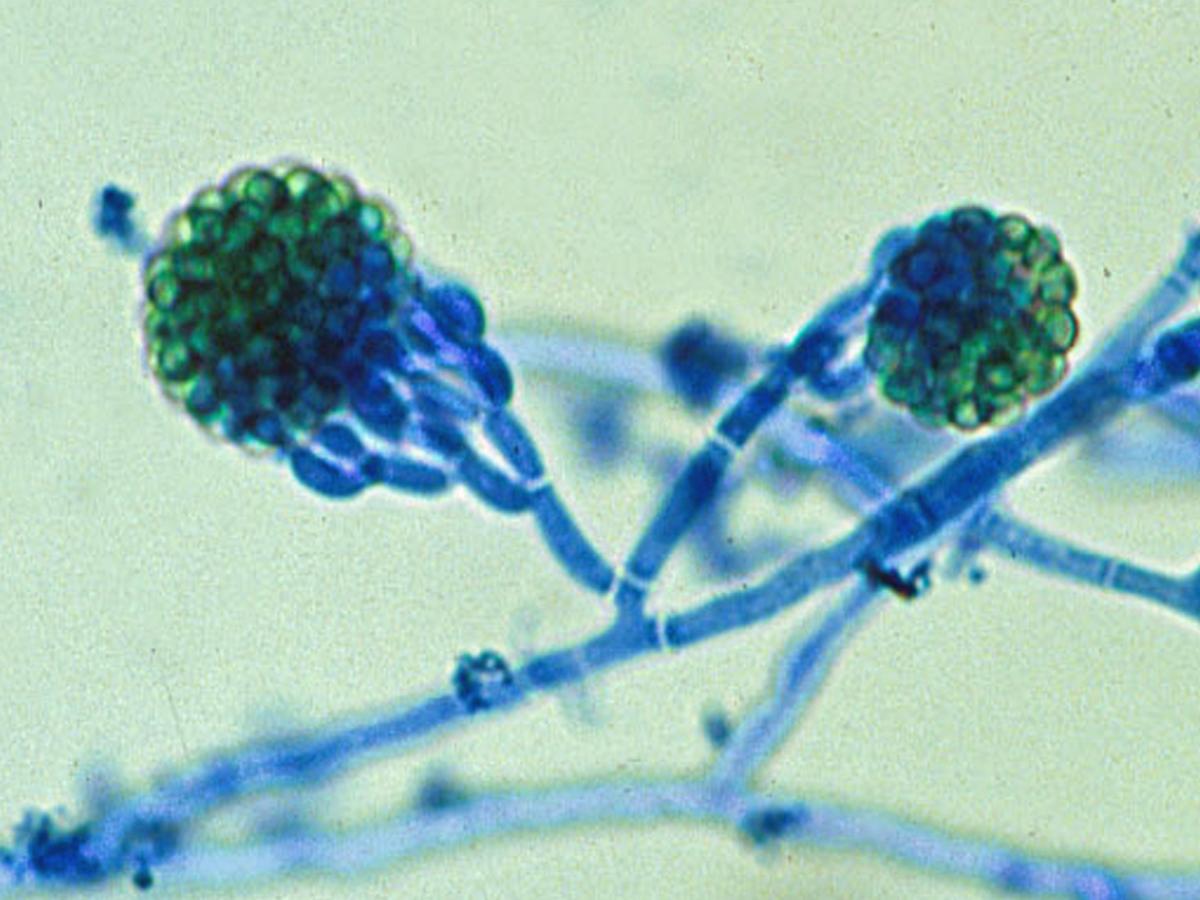Gliocladium
Gliocladium species have a worldwide distribution and are commonly isolated from a wide range of plant debris and soil.
RG-1 organism.

Conidiophore and conidia of Gliocladium spp.
Morphological description:
The genus Gliocladium is often described as a counterpart of Penicillium with slimy conidia. Colonies are fast growing, suede-like to downy in texture, white at first, sometimes pink to salmon, becoming pale to dark green with sporulation. The most characteristic feature of the genus is the distinctive erect, often densely penicillate conidiophores with phialides which bear slimy, one-celled hyaline to green, smooth-walled conidia in heads or columns. Although, penicillate conidiophores are always present, Gliocladium species may also produce verticillate branching conidiophores which can be confused with Verticillium or Trichoderma.
Key features:
Hyphomycete producing distinctive erect penicillate conidiophores with phialides bearing clusters of single-celled conidia.
References:
Domsch et al. (2007), McGinnis (1980), Onions et al. (1981), Rippon (1988), de Hoog et al. (2000).
